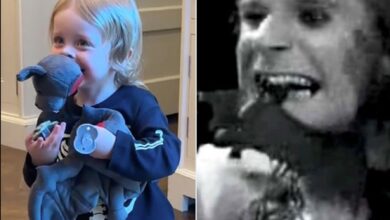Carl Perkins’ “Blue Suede Shoes”: The Rockabilly Classic That Launched a Revolution
“Blue Suede Shoes” stands as one of the foundational tracks of rock and roll, first written and recorded by Carl Perkins in 1955. It is widely regarded as one of the genre’s earliest rockabilly anthems, seamlessly blending blues, country, and early pop influences. Its release would mark a pivotal moment not only in Perkins’ career but also in shaping the future direction of modern music.
Two primary accounts explain the origin of the song’s concept. In one, Johnny Cash recalled a conversation with a fellow serviceman, C.V. White, who obsessively guarded his air force-issue blue suede shoes. White would reportedly warn others not to scuff or step on them. Cash shared this quirky memory with Perkins, suggesting it might inspire a song. At first, Perkins laughed it off, joking that he didn’t know enough about shoes to turn the idea into lyrics.
Another version of the story places the inspiration at a dance hall performance on December 4, 1955. Between sets, Perkins overheard a young man chastising his date: “Uh-uh, don’t step on my suedes!” Curious, Perkins glanced down and noticed the man’s blue suede shoes—one slightly scuffed. That moment stuck with him. The seriousness the boy placed on his shoes over the girl led Perkins to begin crafting a tune that very evening.
Perkins took inspiration from a popular children’s rhyme to build the song’s structure. He drew upon the lines, “One for the money, two for the show,” adding his own rhythm and spin: “Three to get ready, now go, man, go!” He began strumming his Les Paul guitar using an A chord, scribbling down lyrics quickly on nearby scrap paper. In his rush, he misspelled the title as “Blue Swade Shoes,” though the core of the song was already intact.
The track was officially recorded on December 19, 1955, at Sun Records. Under the guidance of producer Sam Phillips, Perkins captured the dynamic energy of his composition. During the recording session, Phillips recommended a lyric change—from “go, boy, go” to the cooler, jazzier “go, cat, go”—a phrase that would become one of the song’s most memorable lines and help fuel its popularity upon release.
Released at the beginning of 1956 as Sun 234, “Blue Suede Shoes” quickly caught fire. Radio host Bill Randle championed the track on his Cleveland program, prompting a massive shipment of additional records to meet demand. Though the B-side “Honey Don’t” initially gained traction in Perkins’ hometown of Jackson and nearby Memphis, “Blue Suede Shoes” soon dominated local airwaves. By February 11, the song had climbed to the second spot on Memphis charts and, a week later, secured the number one position, where it stayed for an impressive three months.
Elvis Presley also recorded a version of “Blue Suede Shoes” that same year, choosing it as the opening track for his debut album. Presley showcased his take on the song in several national TV appearances, which helped popularize the track even further. Despite the overlap, Perkins’ original maintained its place in the charts and in the hearts of listeners who appreciated the authenticity of his version.
Tragically, just as Perkins was preparing to capitalize on the song’s success with a major television appearance, disaster struck. On March 22, 1956, while en route to New York, Perkins and his band were involved in a devastating car crash. The accident resulted in serious injuries for several members and tragically claimed the life of Perkins’ brother, Jay. The incident derailed what might have been the biggest breakthrough of Perkins’ career at that critical moment.
Still, “Blue Suede Shoes” endured. Over the decades, the track has been recorded by numerous influential artists, including Buddy Holly, Eddie Cochran, and others who helped carry the rockabilly torch. Each version added a new twist, yet all paid tribute to the spirit of Perkins’ original. The song became a symbol of early rock and roll’s swagger and style, with its legacy firmly rooted in music history.





